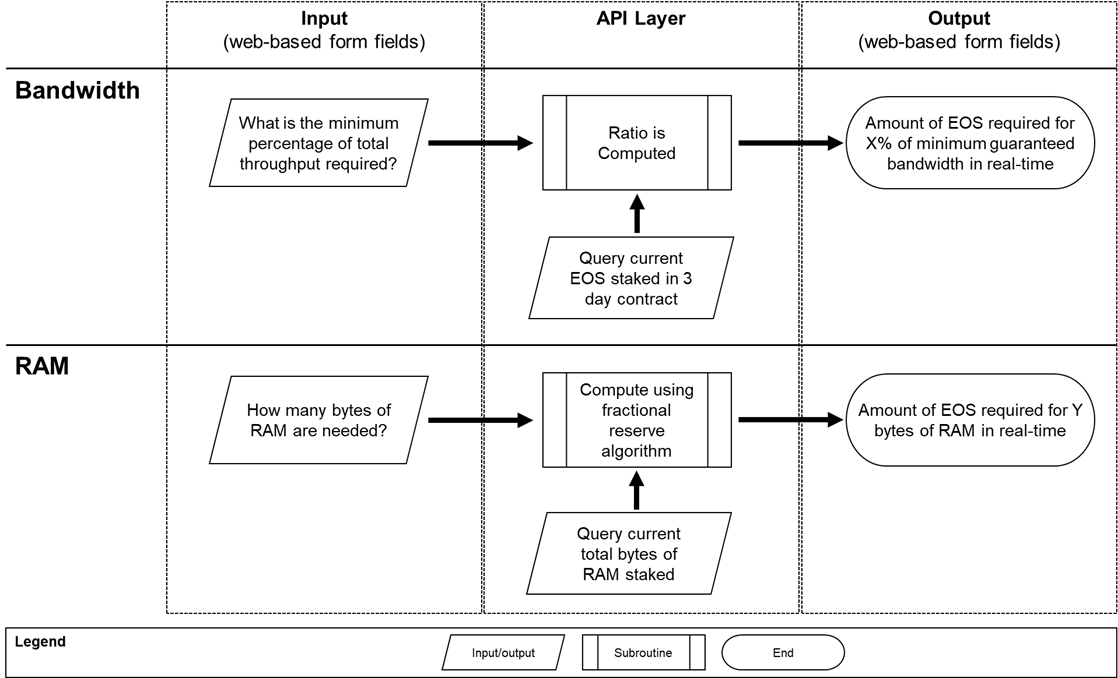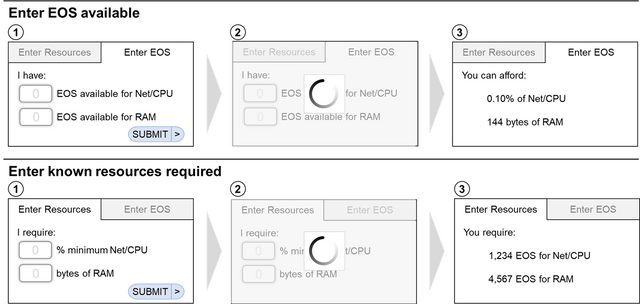“How Many EOS Tokens Do I Need for My dApp?”: The EOS Resource Planner

- Every EOS Developer Everywhere
Simple Is Powerful
EOS has the limitless potential to empower us to tackle some of the most important issues we face as a global society. But before we secure life, liberty, and property, the community must develop the tools to help answer the basic questions. No matter what their goal, every developer will start with a single question when building on the EOS.IO platform, “How many EOS tokens do I need to power my idea?”.
Per our roadmap item, Community dApp Project, @EOSNewYork is developing a tool that will answer this question.
The EOS Resource Planner or ERP
We are developing both a standalone and modular service that will be queryable by anyone in order to understand, at that point in time, the amount of staked tokens needed to secure desired resources. Yes, it will be centrally available at www.eosrp.io (under construction) but for convenience only. The code will be open source and can be used anywhere by anyone.
At this time, accurate resource estimates will not be available until the network is launched. Per the EOS.IO whitepaper, “Block producers publish their available capacity for bandwidth, computation, and state.” source. We anticipate all Block Producers to comply and make accessible their network statistics to help power this tool.
Phased Approach
Below is the “features-in-phases” approach for deploying the EOS Resource Planner.
Phase 1 (Available near launch): Point-in-time estimate of EOS tokens required for X resources <> Point-in-time estimate of resources afforded from Y EOS tokens.
Phase 2 (Q4 2018): Average look-back window of additional resources afforded based on fractional reserve system.
Phase 3 (Pending Chintai Development): Average lease price of Y EOS tokens available.
Phase 4 (Pending EOS Ecosystem): Multi-chain resource estimation.
The tool is of straightforward design and we do not foresee challenges hitting the deployment date close to EOS launch. Phase 2 must occur toward the end of the year so that we can accrue enough data to provide a statistically significant average of fractional reserve resources allocated over different lengths of time.
Process Flows & Interfaces
Below are a flowchart and sample user interface design which visualizes the intended direction of the EOS Resource Planner:
Process Flow
For illustrative purposes only
.png)
Sample User Interface
For illustrative purposes only

Once the tool is finished, we hope it's deployed across voting portals, block explorers, and many other community-developed tools. Our goal is that the ERP is flexible enough to plug-in anywhere needed.
Note: The current design and architecture is based on our understanding of resource staking and the underlying software. All that is stated herein is subject to change based on software updates and/or fundamental token resource adjustments. Please feel free to help contribute to this open source project at our GitHub.
EOS New York is a Block Producer Candidate. Always Adding Value. Everything a Block Away.

Very good resource to such a common question! Thanks for working towards this. I'm not sure how feasible it would be, but might also be interesting to have a way to compare what similar resources would costs in normal hosting/cloud providers today.
"It's estimated your usage would require ### of staked EOS tokens. At current market price that would require an investment/expense of $$$. The comparable cost for this would be approximately $$$ per year, where you pay recurring charges for consuming such resources. With EOS, you only pay more if you require more tokens to access more resources."
Great suggestion!
I agree, it would be good to show cost benefits of EOS compared to other cloud providers.
This is a much needed project, I am sure it will be another great tool in the EOS community arsenal to help drive adoption.
Great work, really excited to see how the whole dynamic of token leasing works out.
Helpful and very good idea. I would suggest considering to add a section about current dApp usage. Based on running dApp behaviour and their performance and knowing how many tokens it is using we can predict what we need for oursdApps. Of course, every dApp is different but this knowledge can help to predict the total cost of running our dApp.
So that we understand, you mean publishing "XYZ dApp" average usage to give a frame of reference?
very helpful content.
From June 1, EOS price will entirely depend on how much bandwidth and RAM it is able to provide... at all the times EOS has to beat the pricing of GCP and AWS and other competing infra providers... although the prices may not be directly comparable as EOS wont charge monthly/ Yearly subscription fees...
Yes! We wrote a post about this as well here https://steemit.com/eos/@eosnewyork/voting-matters-on-eos-token-price-volatility-and-its-effect-on-the-eos-io-network
Excellent post it is... very simple explanation for everyone to understand...
EOS !!!
best of everything!!!
Great post
Up
resteemed
Looking forward for EOS! :)
I've been hoping a tool like this would be developed! Good work.
Great project. Looking forward to see it online.
It looks like they released this under a new URL. Very useful tool:
https://acoutts.com/eos/
Github Source Code: https://github.com/eosnewyork/erp